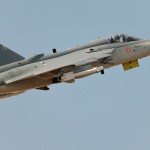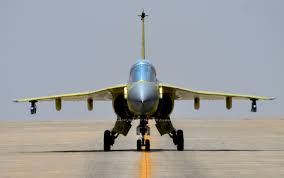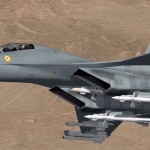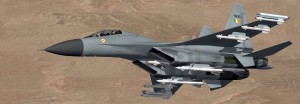This article was presented at a Seminar by CII 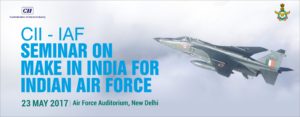 on ‘Make in India for Indian Air Force through Innovation & Indigenisation – Season 2’ on 23rd May 2017 at Delhi. Specific instances are cited, where the clauses in the Defence Procurement Manual have been breached in letter and spirit in actual practice.
on ‘Make in India for Indian Air Force through Innovation & Indigenisation – Season 2’ on 23rd May 2017 at Delhi. Specific instances are cited, where the clauses in the Defence Procurement Manual have been breached in letter and spirit in actual practice.
DPM 2009 – THEORY vs. PRACTICE
Introduction: The term ‘Self-reliance’ has been a fashionable term of Prime Ministers and defense ministers over the last six decades. Yet, we continue to be reliant as ever on foreign OEMs for supply of critical weapons and systems. Apart from the financial burden, the intangible risk of blockage of spares and support due to international political posturing is even greater. Without true indigenization, self-reliance is impossible.
Today, the DPM 2009 is breached in both letter and spirit. DPM 2009 highlights the need for support and encouragement to indigenous manufacturers with D&D capability. In actual practice, this is rarely experienced. It also suggests that DPSUs & DRDO align their procedures accordingly. This does not appear so.
One of the glaring obstacles to successful indigenization is the lack of a collective approach. Aerospace and Defense (A&D) is a highly specialized technology sector with a veil of confidentiality that prevents familiarisation to private industries. Hence, induction of the private industry can only happen if there is adequate knowledge sharing with opportunities for exposure in either DPSUs or the BRDs of the IAF. While this is reflected in some of the paragraphs of DPM 2009, it appears to focus predominantly on procurement from foreign OEMs with only Chapter 15 being devoted to Indigenous D&D. Issues with reference to the specific paragraphs of DPM 2009 are listed below.
Para 2.4.4 – “Indigenous firms should be given all support to produce and supply quality goods”. This does not start and end with periodic seminars and workshops on Indigenisation, but should result in more practical support such as provision and access to airworthy grade raw materials, standard parts, processes, etc. either directly from the BRDs or through a DPSU. There should also be technical knowledge sharing on a ‘need to know’ basis.
2.5.2c – “Exemption from EMD and waiver of Security deposit for MSMEs” – PBGs and Warranty BGs are still insisted by many of the maintenance bases/depots. BGs are issued by banks only against deposits. Hence, this money gets locked up for over 18 months since the BGs roll over from a Security deposit to a Performance/Warranty BG. MSMEs getting into multiple projects cannot afford to lock up precious finances. Refer suggestion under Para 15.2.4.
3.2.5 – “Inter-Services and inter-departmental Acceptability of Registration” – This is meant to be applicable across all Services. However, it is seen that each BRD within the IAF, leave alone other Services, has its own Registration process.
7.10.3 – “Guidelines for levying of LD” – LD needs to be seen in the context of the specific procurement. Firstly, LD needs to be applied only when there is a definite hardship and cost suffered by the buyer, especially in case of routine and repetitive procurement of standard and proven parts. However, application of LD for the indigenous D&D of any item taken up by an Indian industry appears to be contradictory to para 2.4.4. While there is provision for waiving of LD, this is very rarely exercised due to fear of adverse audit comments.
11.2.2 – Repair Contracts – This is primarily aimed at foreign OEMs. However, the same terms are also applied to Indian firms, especially MSMEs, who take on very challenging tasks at very high financial risks at their own cost. Repair of obsolete parts and equipment of foreign origin are tendered for Indian enterprises only when the foreign OEM stops support. In such a scenario, the IAF has no other alternative than to attempt local repairs. Hence, it is neither fair nor encouraging for an Indian MSME to be penalized with LD, PBG & WG for successful execution of the job. Even in the case of unsuccessful attempt, the Indian vendor has already incurred a sizeable loss through expenditure in the process. Further, it is worth recognizing the value of undertaking repairs of foreign OEMs. Repair is one of the best and economical methods of demystifying and deciphering specialized technologies. Access to the inner parts of equipment reveals details of state of art manufacturing technologies, types of components and raw materials used, multi-disciplinary design techniques, methods of ruggedisation, maintainability features, etc. that can be effectively used for indigenous D&D.
11.3.2 – “Unforeseen repairs – Missing parts, PCBs, etc.” – Except in the case of a repeat order, all repairs of OEM equipment would certainly have many unknowns and hence unforeseen issues. In most cases, OEMs do not supply detailed technical documents other than basic guidelines on disassembly and re-assembly. Hence, the 60 days period as a limit for identifying and intimation of unforeseen repairs appears unrealistic, at least for repairs of LRUs. This needs to be made more industry friendly so that it is a win-win situation for the IAF and the industry.
11.8 – Warranty for repairs – It is highly unfair to seek a Warranty on repairs of aged and obsolete equipment since many of the parts other than the repaired part may sequentially fail due to its excessive age. Failure of such aged parts may also consequentially lead to failure of the replaced part. Hence, this is a grey area of the DPM that needs improvement.
13.8.5 – “Data sharing between Services” – This never seems to happen even within each Service, leave alone between them. There is an urgent need to implement this since successful indigenization or repairs in a particular domain (communication/ hydraulics/ controls/ pneumatics/ guidance/etc) can be put to quick and effective use for the benefit of both the industry and the Armed Services, due to similarities in platform systems.
CHAPTER 15 – INDIGENOUS Design & Development
15.1.2 – “Economic viability of indigenization to be established based on likely requirement for 3 to 5 years”. Further refers to “economies of scale so as to make it commercially viable …”. Strangely, many RFQs issued by the BRDs do not even indicate future requirements. A D&D RFQ for qty. 1 or 2 is absolutely meaningless and displays a complete lack of understanding of ROI for private industries. Further, this also makes a mockery of a tender process since bidders can exaggerate the unit price and lower the D&D cost so as to still achieve L1. However, they stand to make higher profits on future production, whenever that happens. This actually works against the interests of the buyer and the Govt. Hence, the evaluation criteria for L1 should include at least the first batch of future supplies which should also be specified in the RFP.
15.2.1c – “Development contracts may be placed with two or more contractors in parallel. EOQ may be placed on L1 contractor”. When future quantities cannot be clearly predicted, only L1 would get the order. However, to keep the option of allowing additional contractors in case of higher quantities, the design of L1 could be used by any other vendor against payment of a royalty. The Royalty amount should be specified as part of original tender bid.
15.2.3 – NCNC contracts – This is one of the most dangerous options for an industry for two reasons.
-
The buyer is never under any compulsion to procure the developed product on some pretext or the other since there is no commitment.
-
As price is not pre-negotiated, IFA can insist on an RFQ for bulk supplies and the NCNC vendor could lose the bulk production bid negating the whole purpose of undertaking development at his own cost.
15.2.4 – DPM 2009 states that “Deposits and EMDs need not be insisted from reputed companies”. This option is rarely exercised even with MSMEs with proven track records in A&D sector. A scientific and transparent system of rating MSME vendors based on successful completion of prior projects can be easily implemented. Such rating can be used to either reduce or completely exempt the MSME from EMD or Performance/Warranty deposits. The rating can also consider failures and delays to derate the MSME thus making the system very dynamic. Ideally, this rating system should be common and universally applied across all defense services.
15.3.2 – Design – IPR for indigenous design should be held by the firm developing it. Customer should provide a “Non-Disclosure undertaking” and should not provide the same to any other indigenous supplier.
15.10.2 – Acquiring Manufacturing Drawings – This para makes no mention of IPR for the design realized by the vendor. True value of IPR lies in the recurring profits resulting from long term bulk production and not in the actual design cost. Hence, the IPR ownership should not be transferred to the Services, but should remain with the D&D organization. Alternatively, a royalty amount can be negotiated as part of the tender bid. This topic was discussed at one of the seminars held in Delhi a year ago and Govt. representatives had largely agreed with this argument. As stated in above Para 13.3 and 15.1.2, future quantities are not always stated. Further, insistence of submission of design is neither universally applied nor stated in the RFQ. The matter raises its ugly head only at the successful delivery of the product and at that stage no MSME would have the ability to take a legal stand on this issue since payments would be withheld. This matter therefore needs better clarity in statement.
Miscellaneous Issues:
The concept of IDDM should be brought into DPM and given primacy over all other forms of procurement.
Local Taxes and duties – Exemption certificates, etc. – Services should pay all duties and taxes based on documentary evidence of actual payment. Vendors should not be subjected to harassment by Local governance bodies.
Registration and Categorisation: The matter of registration and categorization of products and services has been misinterpreted by some of the Buyer agencies. It was contented that registration was valid only for the specific type of product/services that the MSME has already delivered. This is incorrect. Eg; An organization with competence and proven track record in electronics should be permitted to bid for any electronic equipment as long as some competence in reverse engineering or design exists.
Conclusion : DPM 2009 needs to be improved further through active and collective participation of all stake holders that includes the Armed Services, DPSUs, large and MSME private sector companies.
 ation to get a first hand account of operations of an MSME? The very fact that RFQs quote a delivery period of 3 months for projects that normally take 3 years shows the disconnect with realities. With poor MSMEs that are attracted to the pied piper singing songs of ‘billions of dollars’, should we say any more?!
ation to get a first hand account of operations of an MSME? The very fact that RFQs quote a delivery period of 3 months for projects that normally take 3 years shows the disconnect with realities. With poor MSMEs that are attracted to the pied piper singing songs of ‘billions of dollars’, should we say any more?!

 on ‘Make in India for Indian Air Force through Innovation & Indigenisation – Season 2’ on 23rd May 2017 at Delhi
on ‘Make in India for Indian Air Force through Innovation & Indigenisation – Season 2’ on 23rd May 2017 at Delhi
 ES FOR MAKE IN INDIA IN THE A&D SECTOR
ES FOR MAKE IN INDIA IN THE A&D SECTOR